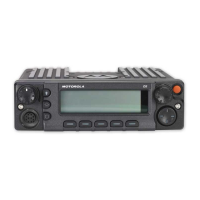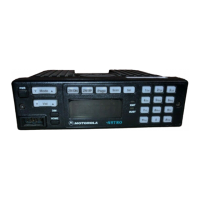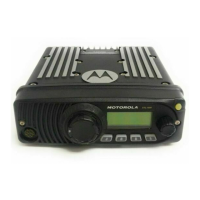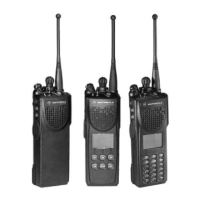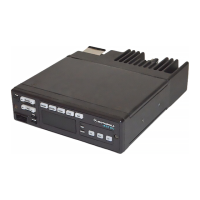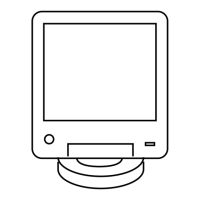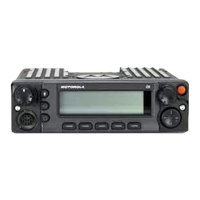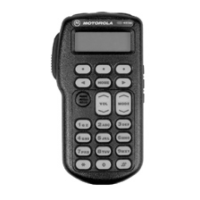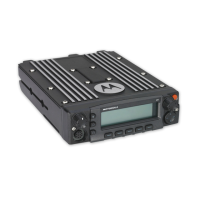June 15, 2005 6815854H01-A
4-34 Troubleshooting Procedures: Power Amplifier Procedures
After a PA board is replaced, or if any power control circuitry components are replaced, readjust the
power according to instructions in the ASTRO Digital XTL 1500 VHF/UHF Range 1/UHF Range 2/
700–800 MHz Mobile Radio Basic Service Manual.
NOTE: Due to the high frequency of operation, it is imperative that you use specified Motorola parts
when component replacement is necessary. At these frequencies, second and third order
properties of the components are very important and are part of the circuit's design. Substitute
components may not work. It is also critical that you use great care when replacing parts.
Excessive solder or flux, longer than original leads on coax connectors, misorientation of
parts, and other commonly benign imperfections may cause the radio's performance to
degrade.
4.12.2 UHF Range 1 (380–470 MHz) Band
In addition to the schematic (“7.4 HUE4039A (UHF Range 1) Main Board” on page 7-65) and theory
of operation (“3.12.2 UHF Range 1 (380-470 MHz) Band” on page 3-33), refer to the RFPA
troubleshooting flowcharts in “5.6.23 No TX Audio (380–470 MHz and 450–520 MHz)” on page 5-34.
These flowcharts will guide you through a sequence of tests and checks designed to isolate
problems in the RFPA stages.
See section “4.12.4 700–800 MHz Band” on page 4-34, for more information on troubleshooting the
RF power amplifier circuitry.
4.12.3 UHF Range 2 (450–520 MHz) Band
In addition to the schematic (“7.5 HUE4040A (UHF Range 2) Main Board” on page 7-106) and
theory of operation (“3.12.3 UHF Range 2 (450-520 MHz) Band” on page 3-37), refer to the RFPA
troubleshooting flowcharts in “5.6.23 No TX Audio (380–470 MHz and 450–520 MHz)” on page 5-34.
These flowcharts will guide you through a sequence of tests and checks designed to isolate
problems in the RFPA stages.
See section “4.12.4 700–800 MHz Band” on page 4-34, for more information on troubleshooting the
RF power amplifier circuitry.
4.12.4 700–800 MHz Band
In addition to the schematic ("Chapter 7. Schematics, Component Location Diagrams, and Parts
Lists") and theory of operation ("Chapter 3. Theory of Operation"), refer to the RFPA troubleshooting
flowcharts in "Chapter 5. Troubleshooting Charts". These flowcharts will guide you through a
sequence of tests and checks designed to isolate problems in the RFPA stages.
Use the following information as a guide for troubleshooting the RF power amplifier circuitry:
• Read the theory of operation before troubleshooting.
• To avoid damage to the RFPA, only key the transmitter with the main board installed in the
chassis and the internal screws completely installed and secured with the proper torque setting.
• The chassis eliminator, which allows access to both sides of the main board is useful for
transmitter troubleshooting. Keying the transmitter for an extended period of time while using
the chassis eliminator can cause damage to the radio. Therefore, be sure to cool the radio by
forcing air through the chassis eliminator cooling fins.
• To avoid personal injury from high RF voltages and currents, exercise extreme care while
troubleshooting the transmitter power amplifier.
• Set the A+ supply to 13.6 V with the current limit set to 15 A.
• Calibrate the power meter regularly using the manufacturer's suggested calibration method.
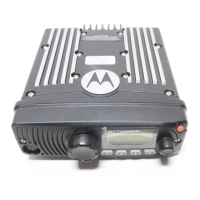
